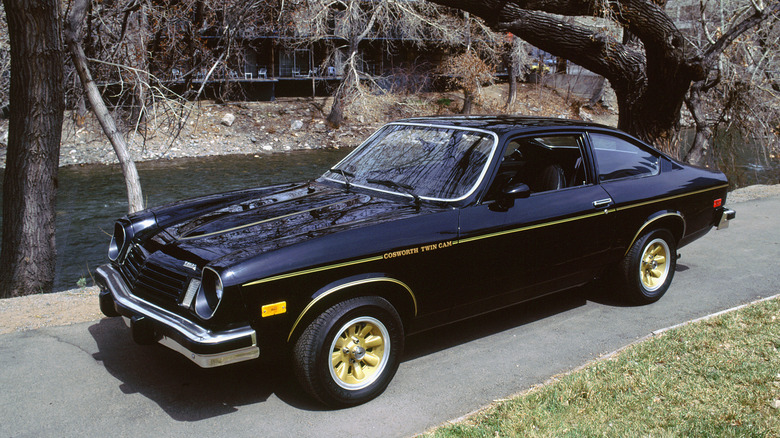Why This Model Is Considered The Worst Chevrolet Engine Ever Made
General Motors has been around the block a few times — certainly enough to have produced a few hits and misses in the engine department. For instance, the Chevrolet Corvette has hosted a diverse array of engines, with some of the finest Corvette engines proving to be reliable and capable of producing lots of power. But what about some of the worst engines the General Motors division ever produced? One engine has the misfortune of being considered the worst Chevrolet engine ever, and we have to go all the way back to the 1970s to find the answer.
Most people remember this as the time of mighty nameplates like the Chevelle, El Camino, Camaro, and Nova, but there's one car that enthusiasts rarely mention in the same breath as these icons. It's the Chevrolet Vega and its abysmal 140-CI four-cylinder. The Vega was, for lack of a better term, a brilliant ahead-of-its-time failure. This is an economical subcompact that GM built just before the early 1970s Oil Crisis, which increased oil prices by a factor of five practically overnight. The Vega should've been an easy win, so why wasn't it?
Frankly, it's because the car was a nightmare, plagued with issues such as rusting fenders, separating rear axle shafts, backfiring carburetors, and more. But most of all, it's infamous for its melting engine. Let's have a look and see exactly what made the engine so bad.
Did Chevy's 140-CI engine ruin the Vega?
The Chevrolet Vega dates back to 1968 and GM's experimental XP-887 project. From the outset, it was to be a lightweight, technologically advanced compact car that would use innovative features such as rust-proofing, an overhead-cam four-cylinder engine, and a forward-thinking focus on fuel economy and ease of production. This was a car built in the same mold as the Volkswagen Beetle or Honda Civic — an affordable, practical vehicle for commuting.
The Vega was actually quite the handsome car, resembling a small version of a Camaro. It was reasonably light, and the engine put out a respectable 110 horsepower in top trim. That combination also made it quite economical; overall, it should have been a sure-fire success, especially once demand for such economical cars picked up in the mid-1970s. Moreover, the 1971 Vega represented several firsts for General Motors; for instance, its production was about 80% automated, and its engine boasted a sleeveless aluminum block. However, all that hype was quickly dashed when, the year after it was introduced, GM recalled half a million Vegas for a host of problems.
Ultimately, while the engine doubtlessly contributed, it only tells one half of the story. As mentioned before, the Vega's problems encompassed far more than the engine, though it's that 140-CI four-cylinder that solidifies it as one of the most hated Chevrolets of all time. Is it really the worst Chevrolet engine ever, though?
Some of the problems with the Vega's engine
The Vega has many issues, but we'll focus solely on the powerplant here. To begin, the engine block itself was aluminum, but the cylinders featured an iron head and piston coatings. Fuel enters via the valves, featuring our first problem: faulty valve stem seals. As the engine heated up, the aluminum expanded more rapidly than the iron elements, creating tremendous stresses on the metallurgy. The specific alloy used in the block's construction would then break down, leaving soft areas where the metal was liable to deform. This led to warped cylinders and cylinder walls, increasing oil consumption and causing coolant leaks. The latter issue caused coolant leaks, and the engine's overheating problems were so bad that the Vega and its engine ended up before Congress in 1978.
Moving on down the line, we reach the exhaust stroke. When coupled with the two-barreled carb option, the Vega's engine occasionally produced backfiring so violent that it could split the muffler. Backfiring is when combustion occurs in the exhaust pipe instead of the engine, with unburnt fuel entering the exhaust valve in one way or another, then exploding inside the muffler. In the Vega's case, it may have been due to the faulty valve seals. All this and more meant that the engine was quite literally riddled with problems from start to finish, with known issues occurring from the carburetor to the exhaust and most places in between.


